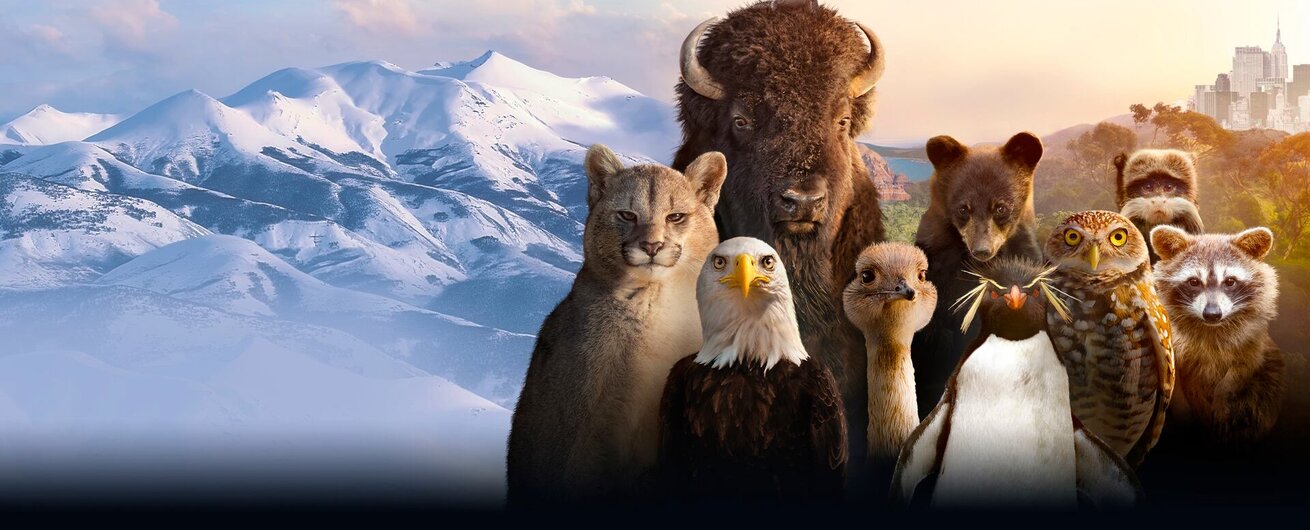The Americas: Why Do Some Trees Lose Their Leaves in Winter?
Tom Hanks explains the mysteries of nature… the way only Tom Hanks can.
The Americas on NBC is revealing the secrets of the natural world in colorful and spectacular new ways, pairing Tom Hanks’ ASMR-worthy narrative voice with some of the most incredible high-resolution footage you can get without setting foot inside an IMAX theater.
With two episodes already released to the wild, the epic 10-part documentary series covers the mysteries of flora, fauna, and terrain from the very tip of South America all the way to North America’s Arctic reaches. Even when he’s covering what feels like familiar ground, Hanks has a inquisitive knack for finding genuine fascination in all the natural phenomena that surround us — including the real story behind the annual foliage cycles of the majestic red oak tree.
RELATED: The Americas Narrator Tom Hanks is Full of Nature Facts: "I'm the Greatest Dinner Companion"
Why do trees shed their leaves? Tom Hanks has the answer in The Americas
Native to North America and covering a habitat that spans the eastern half of the United States into Canada, the red oak is one of the several tree species that draw thousands of tourists to New England each autumn — all for the chance to catch the explosion of leaf-changing color that briefly blankets the rural forests of the northern Appalachian mountains. And while some of us might’ve forgotten those early grade-school lessons about evergreens (which stay green all year ‘round) versus deciduous trees (which shed and regrow their leaves every year), Hanks makes the whole leaf-shedding cycle sound so… well, refreshingly elementary.
Zooming in on one particularly stately red oak specimen — a “Queen of the Woods,” as Hanks admiringly describes it — he illustrates what’s actually a pretty amazing annual process. As the autumn days shorten and precious hours of sunlight begin to fade, the majestic tree must “do something remarkable” in order to survive the coming winter: “She withdraws her chlorophyll” from each leaf, signaling an end to the green pigment’s vital warm-weather role in photosynthesizing carbon dioxide and water into life-preserving sugar — the primary nutrient that the trees thrive on.
RELATED: Everything To Know about The Americas on NBC
In the bargain, of course, each leaf inevitably changes its color — from green into glorious shades of red and gold. “As the green pigment is extracted, all the other colors are revealed,” explains Hanks as some truly incredible up-close images of the event unfold onscreen… though there’s still a little bit more to the leaf-changing story.
During New England’s windy and cold winter days, leaves that aren’t making nutrients do make for what’s essentially dead weight. But, as Hanks relates, the red oak has an ingenious answer for that, creating “a layer of cells that seal [each] leaf off from its twig. Denied the tree’s life support, the leaf dies — and is cast aside.” All that’s then left is for the tree to (amazingly) heal each and every “scar” at every tiny point where a fallen leaf has been separated — “a process she repeats 200,000 times.”
Hanks’ bite-sized botany lesson is just one among dozens of inspiring “a-ha!” moments that await at every turn in “The Atlantic Coast” — The Americas’ first episode highlighting tons of natural wonders from all across the Eastern Seaboard.
New episodes of The Americas air Sunday nights on NBC
Watch new episodes of The Americas Sundays at 8 p.m. ET on NBC, and stream each episode the next day on Peacock.























